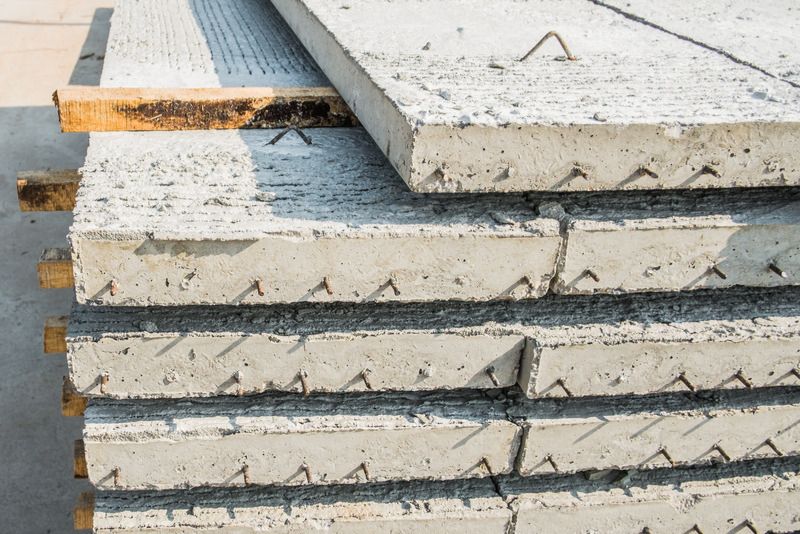Achieve Perfect Results with Your Concrete Slab Project in Gold Coast, QLD
Are you a construction professional or DIY enthusiast looking for perfect results with your concrete slab project? If so, then this guide is for you. Here, we reveal our top tips for ensuring that you achieve the ideal outcome in terms of quality and efficiency when laying your slab. We will cover everything from selecting suitable materials and preparing the base correctly to expert advice on pouring, curing, and finishing techniques – all backed up by real-world experience. So if you want foolproof results every single time with your concrete slab projects, read on!
What is a Concrete Slab, and What Types Are Available to Homeowners
A concrete slab is a flat, rigid piece typically used to provide a level surface for foundations, patios, driveways, and other outdoor structures. Depending on the type of application involved and the client’s budget, several kinds of concrete slabs are available for use in residential projects.
The most common types are:
• Standard concrete slab – this basic form of a concrete slab is typically used for its economical and versatile nature. It offers the advantage of being easily poured into any shape or size desired, making it a popular choice for commercial and residential applications.
• Reinforced concrete slab – this type of slab is often used when additional strength or load-bearing capabilities are necessary. It involves adding a reinforcing grid of steel bars or mesh to the slab mix before it is poured.
• Precast concrete slabs – this type involves pouring a mould with concrete and allowing it to harden in a controlled environment. This results in more accurate and consistent results often used for high-end residential projects. Check more about concrete slabs at Concreters Gold Coast
Understanding the Key Steps Involved in Laying a Concrete Slab
Creating concrete slabs is a complex process, so it is essential to understand each step involved to achieve successful results. Here’s an outline of the key stages:
• Selecting suitable materials – this should involve deciding on the type and amount of concrete required for your project. Consider site access, budget, and expected load-bearing capacity before purchasing.
• Preparing the base – whatever type of concrete slab you decide on, take time to prepare the area correctly. This involves ensuring it is level and lose debris-free before any groundwork occurs.
• Pouring and smoothing the concrete – this should be done with care and expertise to ensure that the slab has a uniform thickness across its entire surface.
• Curing and finishing – the curing process is essential for achieving strong and durable concrete slabs, so ensure this step is done correctly according to the manufacturer’s instructions. Any desired finish, such as textured surfaces or colouring, should be applied at this stage.
Preparing the Foundation for a Concrete Slab
When installing a concrete slab, it is essential to ensure that the foundation is adequately prepared. To do this, check to ensure the soil beneath the area where the slab will be poured is packed and stable by performing a simple compaction test. If there are any soft spots or holes, take steps to fill them in before laying down the concrete mix.
If you’re working with new construction sites, you may also need to take extra steps, such as laying a sub-base (a layer of gravel or other material) for added support.
What Equipment is Required and How to Choose the Right Contractor for Your Project
Concrete slab installation requires various materials and tools, such as a concrete mixer, wheelbarrow, trowel, and straight edge. For larger projects, hiring a professional contractor with the right skills and experience is recommended to carry out the job effectively. When selecting a contractor for your project, ensure they have the proper qualifications and insurance coverage. Ask for references from previous clients or check rating websites to get an idea of their reputation and quality of work.
Finally, familiarize yourself with the applicable building and safety codes in your local area, as these will impact the type of slab that can be used and any other regulations you must follow. However, with an expert like Concrete Gold Coast , you will rest knowing these details are taken care of.
Tips for Installing a Concrete Slab Successfully
For a successful concrete slab installation, the following steps should be taken:
• Research and plan – before starting any project, it’s essential to research the relevant materials and regulations and plan out the job. This will help ensure that the slab is laid correctly and quickly.
• Use the right mix of concrete – different applications have specific requirements regarding the type and amount of concrete required. Select the correct mix to guarantee a strong and durable slab.
• Don’t rush the curing process – you must allow the concrete slab to cure correctly, as this will ensure its strength and longevity. Follow the manufacturer’s instructions for the maximum recommended curing time.
• Finish off with sealants – sealants or paints should protect all concrete slabs from water damage. This will help to prevent cracking and provide a smoother, more attractive finish.
Contact Concrete Gold Coast Specialist to get started!
Concrete slabs have become an essential part of residence builds and home improvements. They provide stability, durability, convenience and a great look for customers. The advantages concrete slabs offer far outweigh the disadvantages they carry for residential and commercial projects. Therefore, when looking for a dependable surface option for your next home improvement project or construction build, look no further than concrete slabs from the Concrete Gold Coast Specialist experts.
Their team can provide you with quality advice on choosing the correct slab type and material that will best suit your needs and timely installation of their work.
